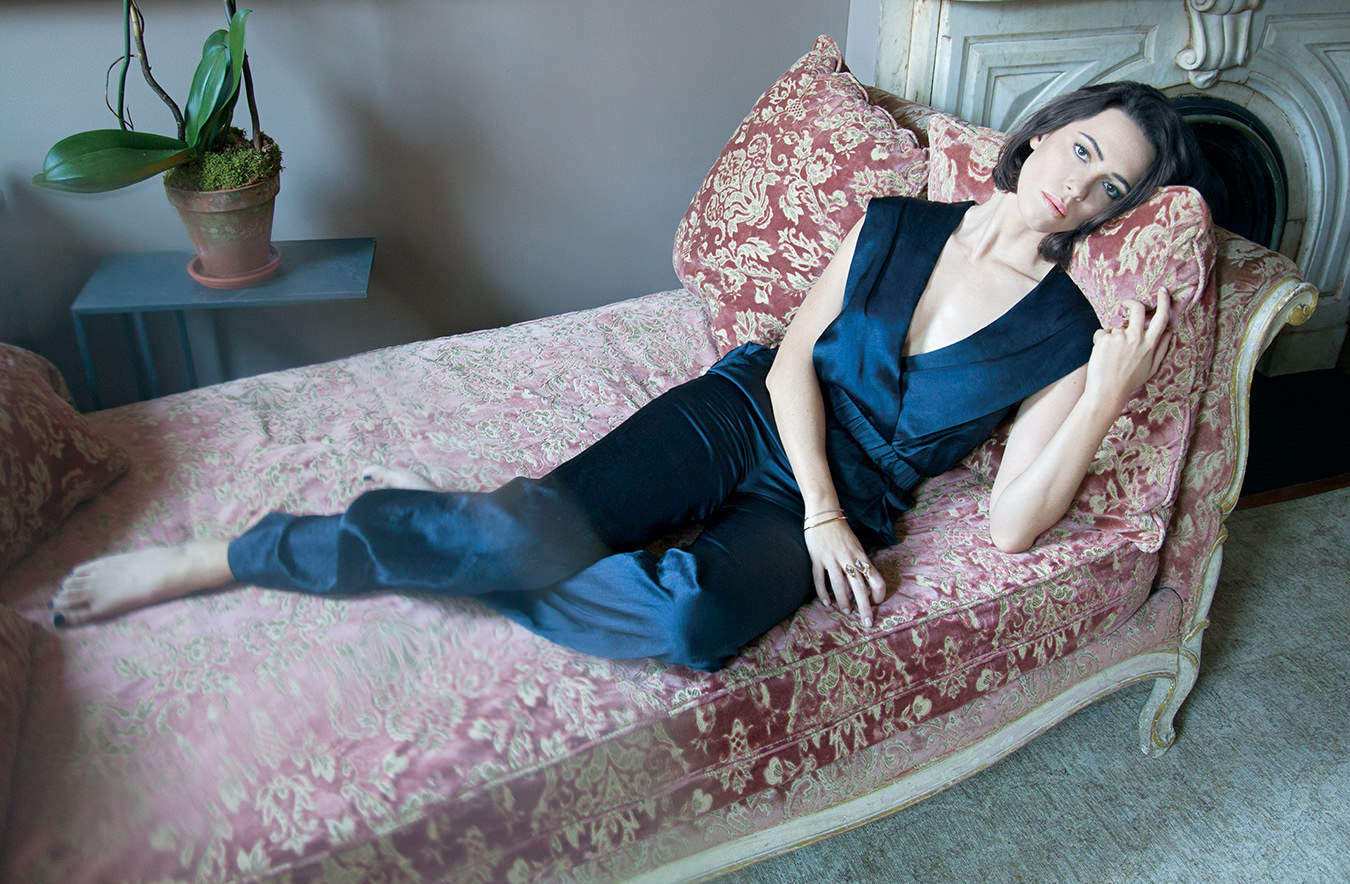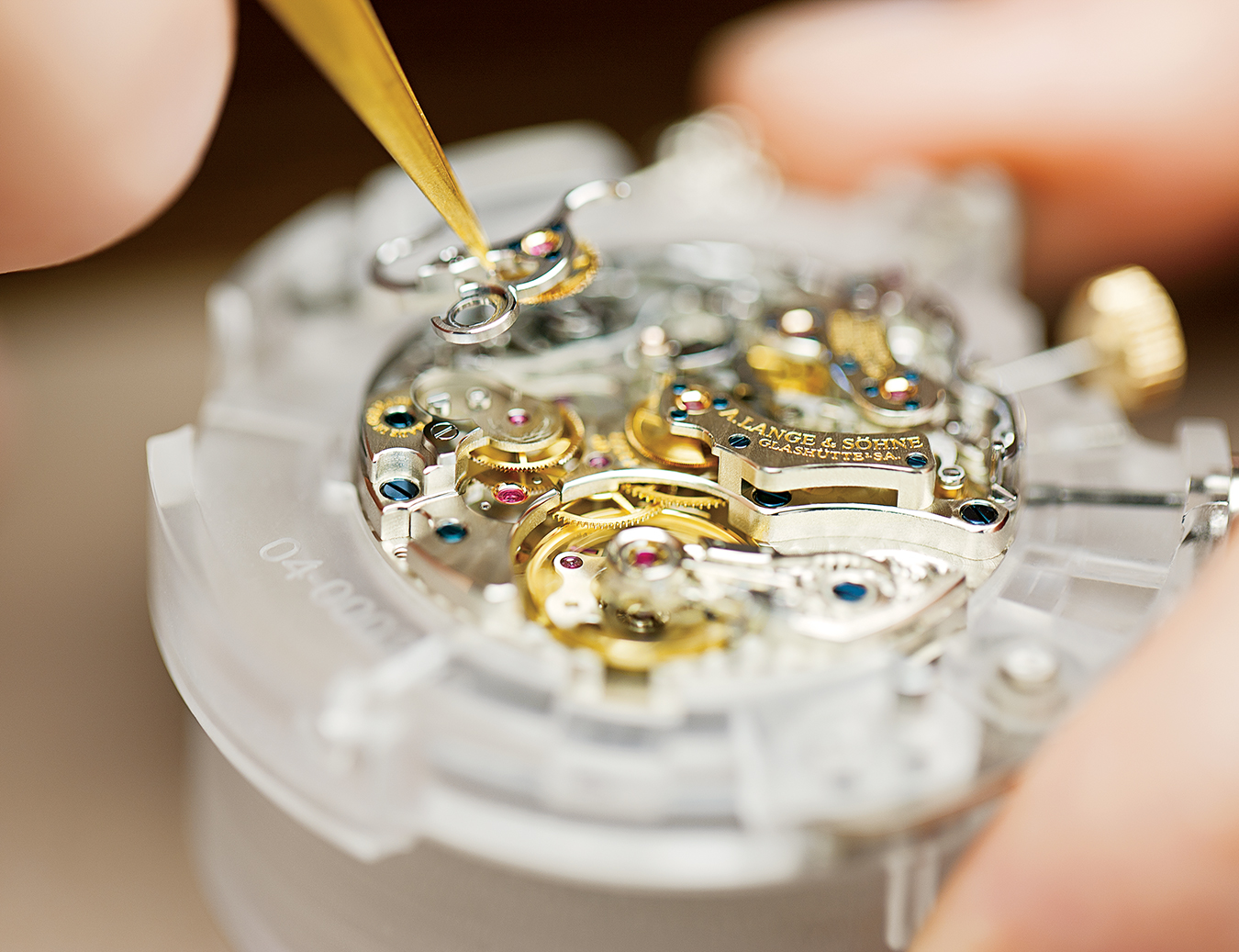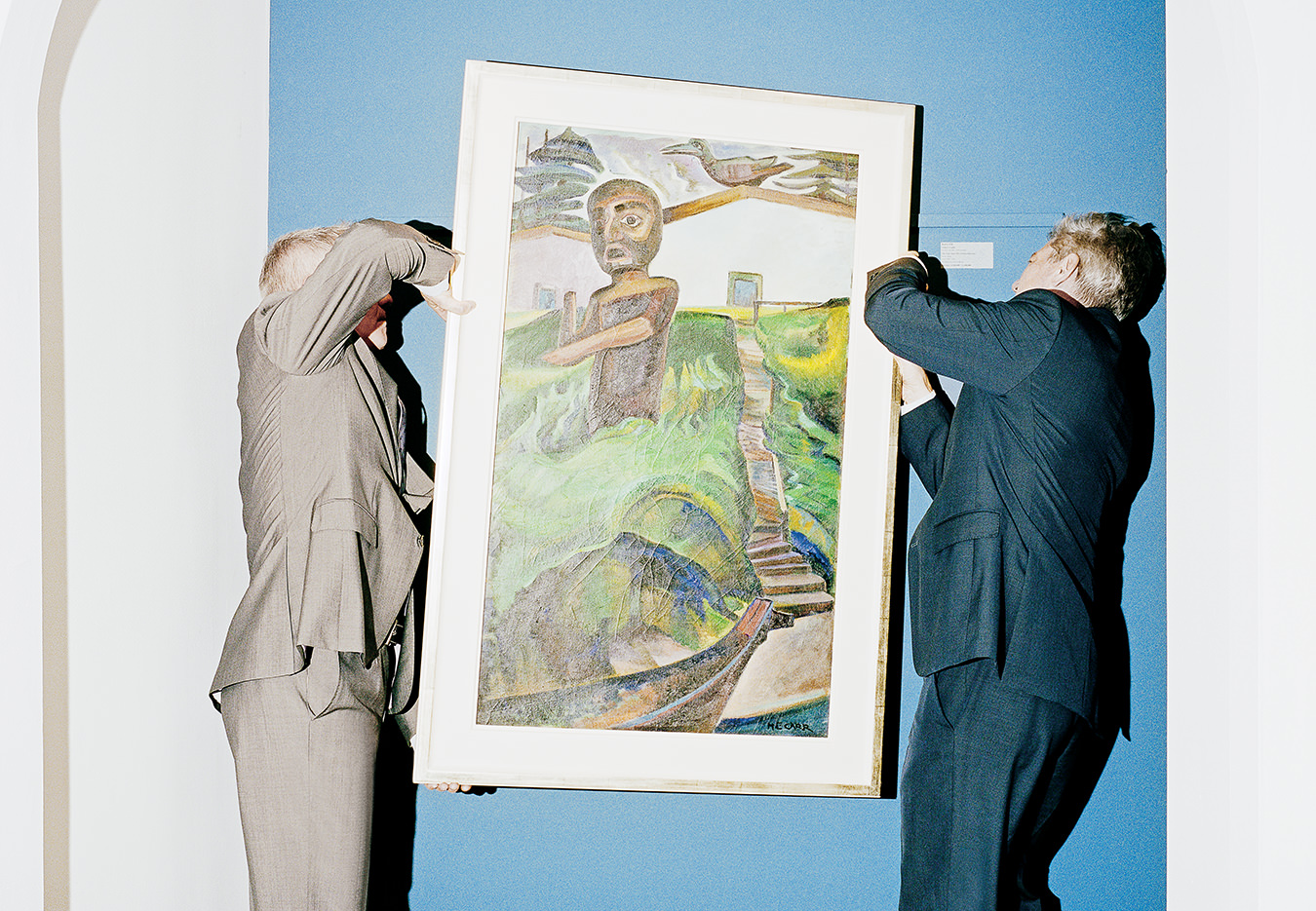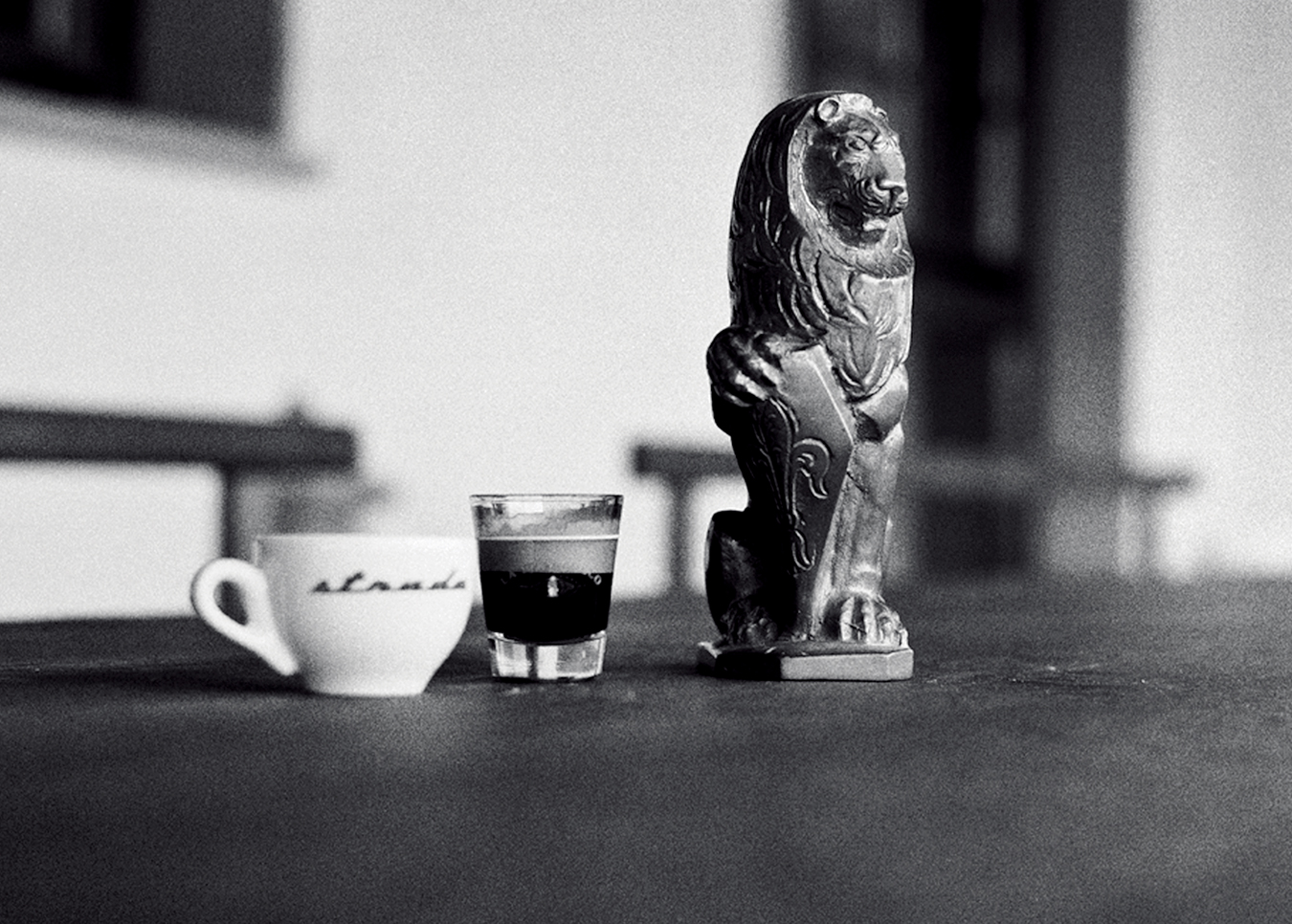On Kit and Ace Time
An international cashmere clique.
“Hey, we’re rocking the same look!” 27-year-old Kit and Ace head of brand JJ Wilson affably exclaims on a warm Vancouver day outside company headquarters. A group of employees returning from their lunch break all pause to chuckle and put their feet in, hokey-pokey style, showing off bright, solid-hued sneakers, the rest of their outfits either all black or all white. “We’ve all got the monochrome with colourful kicks,” JJ laughs. Inside, the office is Google-campus slick, a pitch-perfect millennial workplace that Kit and Ace has called home for a year and a half. There’s fresh juice in the break room, a neon sign reading “Time is precious” glows from a wall, and a staff of beautiful young people emits a collective aura of cool competence. When a non-employee bumbles in off the street to meet someone or deliver something, it’s sore-thumb city. One gets the sense you’re either Kit and Ace material—cohesive with the dominant low-fi chicness, aesthetically complementary to the company’s palette of neutrals and iris blue—or you’re noticeably not. To be Kit and Ace is to be part of an in-crowd; the brand exudes a mysterious exclusivity. Chuckling about the possibility of hosting an office-wide sports day and comparing jet-set schedules, JJ and his stepmother, lead designer Shannon Wilson, a lean, keenly observant 42-year-old whom JJ affectionately refers to as a “power woman”, embody that athletic, ambitious, somewhat mystifying identity. They’re Kit and Ace down to the very last fibre of their beings.

Co-founded by JJ and Shannon in July 2014, Kit and Ace is Canada’s most rapidly expanding fashion line, born from the merits of a single textile. The primary fabric used in Kit and Ace’s clothing is known as “Technical Cashmere”. It’s a proprietary fabric of Shannon’s own creation that provides conventional cashmere’s benefits—its softness, its warmth, its luxury connotations—sans inconveniences, like the fact that it needs to be dry-cleaned. This cashmere is “technical” because it’s a blend, composed of varying proportions of viscose, elastane, and approximately 9 per cent cashmere. Much like high-grade rayon, it can go in the wash, it breathes, it holds its shape, and it feels silky-soft between your fingers. Its fibres have bounce, don’t shrink, and are a special length that allows them to resist pilling. The wool in Technical Cashmere still originates from real, live cashmere goats living on the Mongolian steppes, but it’s supposed to make your old cashmere sweater look like Windows 98. Kit and Ace sells the cashmere of the future.
The idea for Technical Cashmere came to Shannon in 2012, while she and her husband, Chip Wilson, were on sabbatical from their roles as lead designer and founder, respectively, at activewear behemoth Lululemon. Shannon, who handmade clothes for her dolls when she was young, graduated from the University of Victoria’s fashion design program (she now also holds an honorary doctorate from Emily Carr University of Art + Design), and proceeded to veritably invent the yoga-pants-at-brunch “athleisure” style. She recalls offering a prototype of Technical Cashmere to Lululemon in 2013. “Where I saw the next opportunity in the market was, when you’re done with your athletic wear and take it off, you still expect that same level of performance for what you put on for the street,” she explains. Unlike Lululemon’s core products, these were not clothes to play sports in, but were simply clothes that sporty people might like. But the company wasn’t interested, and ultimately, a soured relationship between Chip and Lululemon’s board of directors led the couple to depart, selling approximately half their stake in Lululemon for $845-million (U.S. throughout); they retain a 15 per cent share. They left—and took Technical Cashmere with them.
Shannon first met JJ, Chip’s son, in 1998 when she began working at Lululemon and he was a 10-year-old hanging out at the original shop in Vancouver’s Kitsilano neighbourhood. “She probably had to put up with me as a little kid running around and messing things up,” he laughs. But by 2014, with a bachelor of commerce degree from Ryerson University, and years of brand and design consultation at companies including Holt Renfrew, Wings + Horns, and, yes, Lululemon under his belt, JJ had the ideal qualifications to complement Shannon’s design savvy: he brings the youthful market literacy, she the technical development skills. “I think we have a really great shared aesthetic,” says Shannon of the decision to partner. “We have a shared vision and a love of design and product, but then we can go our separate ways into our areas of expertise.”
Kit and Ace sells the cashmere of the future.
Confident in his wife and son, Chip took on a new role as Kit and Ace’s unofficial adviser and financial backer, announcing in 2015 that he had invested $7-million in starting up the company and expected to take on $300-million in debt by 2019 funding its growth (which includes plans for 95 more U.S. outlets by 2019). “Chip is absolutely involved with the brand,” says Shannon. “He offers a lot of advice … We’re very fortunate to have him around.” Upon launching its website, Kit and Ace posted a recruitment video that has since been removed in which now ex–Kit and Ace CEO and former Lululemon Asia-Pacific director Darrell Kopke stated that the brand would make $1-billion in sales in its first five years. (Kopke was subsequently let go by the company in November 2015, citing the board’s desire for a “new direction” as the reason for his termination.)

“I think when Shannon developed Technical Cashmere, we had the exact same feeling she and Chip would have had when they created Luon,” says JJ, referencing the revolutionary yoga-pant material on which Lululemon built its reputation as the world’s pre-eminent derrière flatterer. And yet, while Lululemon had the Groove Pant—a crucible product using Luon to its immediately apparent strengths—Kit and Ace opened its doors to a perplexingly small selection of, essentially, plain T-shirts. “I think that Shannon and I had no intentions at that time to scale Kit and Ace to the level we did,” says JJ. “We started with just a T-shirt, and it organically ended up growing.” Since then, the company has released men’s and women’s separates, jewellery, undergarments, swimwear, and most recently a collection of pieces in machine-washable “Technical Silk”. “I can’t necessarily say we knew on day one we’d have 60 shops in one year,” says JJ. “We were only going to have one shop, but the response was just so great.”
Indeed, Kit and Ace expanded rapidly, opening across Canada and in the U.S., the U.K., Australia, and Japan in its inaugural year. They plan to open 10 more shops by the end of 2016—for them, this constitutes a “conscious slowdown”, as Shannon puts it. “We saw an opportunity to get ahead of the market,” she continues. “We knew we needed to move quickly in order to be first and get our name out there, so we did.” Their expansion included launching pop-up shops to test various consumer markets, allowing them to invest where they felt most likely to see a satisfying return. (Their Vancouver Gastown and Toronto Bloor Street locations are top performers.) The company has also launched seven in-store “Technical Ateliers”, where customers can have clothing fitted and hemmed, and two outposts of Sorry Coffee Co., a store-adjacent café where guests will soon be able to order “Canadianas” (“Like Americanos but our version, with maple syrup,” JJ clarifies). Once operationalized in February 2016, the company drew attention for laying off 10 per cent of its head-office staff.
The stores all share a serene grandiosity—a sort of utopian, sci-fi cult feeling with high ceilings, white walls, rows of custom mannequins, rose-gold accents, and large rectangular tables the same size and style of the table the Wilsons gather around to dine together in their home. Yet, wherever they open, Kit and Ace also hires local designers to create 20–30 per cent of each shop’s elements, and displays work by local artists, who in turn lend the brand credibility within the given city’s “creative class”—its trusted arbiters of cool. These are the folk they tend to invite back for special events, like dinner parties, or brunch cruises aboard private yachts. “It’s about driving that local community,” says JJ. “We would never pay to amplify.” The company’s dedicated consumer publication, an online magazine called The Brief, profiles local figures leading aspirational lives, photographed wearing complimentary Kit and Ace clothing. They have also made a substantial investment in branded online editorial-content marketing and traditional print ads. “We’re making sure we have presence, and we’re strategic,” says JJ.
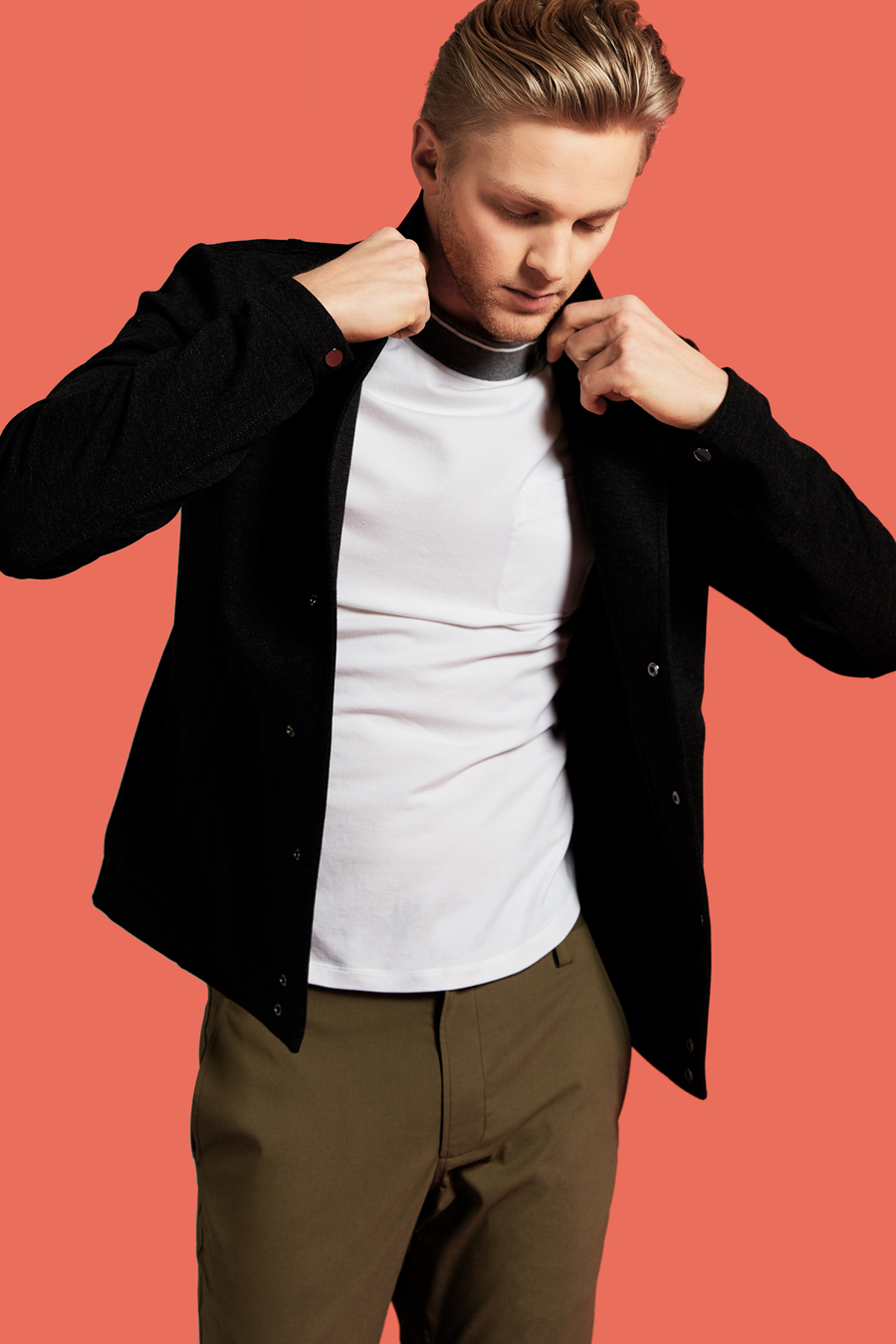
Kit and Ace’s strategy is aggressive, and it requires confidence and deep pockets to execute. The Wilson family’s previous retail experience equipped them with both. You can feel their carefully cultivated collective culture in every store—a significant, intangible sense of the brand reinforced by every detail, from the beatific, attractive salespeople to the chirpy little stories printed on each garment’s tag. Proponents of the San Francisco–based Landmark personal development forum, the Wilsons expect all Kit and Ace employees to attend the controversially intense seminars in order to foster a communal accountability and positivity in keeping with the brand’s sense of self. The Wilsons’ business acumen has been finely honed on a level that’s as emotional as it is hands-on. “Our entire lives have been about retail, design, fashion, and most importantly technical design and athletic apparel,” says JJ. “Every little micro-conversation that occurs over the course of dinner about how the stores are performing, what products are working, how we’re seeing the market evolve, is a continued education. I mean, Shannon’s intent behind Technical Cashmere was really that exact case scenario, when we were talking about how the world is changing and how the benefits of technical apparel can now be applied to clothing for everyday life.”
Kit and Ace’s strategy is aggressive, and it requires confidence and deep pockets to execute.
But semantics are important at Kit and Ace, and when JJ and Shannon use the phrase “everyday life”, what they mean is deceptively specific. “Really, we’re building product for people living what we call ‘full-contact lives’. You know, they’re up early, they’re getting their workouts in, they’re heading into work,” Shannon says. The Wilsons refer to this target clientele as “undercover athletes”—ambitious, creative professionals whose definition of success includes keeping super-fit. The persona is epitomized by the Wilsons themselves (he started his day with a Lagree class, she went spinning and lifted weights), but especially by the imaginary characters of Kit and Ace. They are essentially affluent, childless representatives of a cohort enamoured with ciphers of neo-bougie culture: invite-only supper clubs, enlightening artist lectures, on-tap kombucha, office ping-pong tournaments, trendy workouts. Kit and Ace want to feel yoga-pants comfortable even when dressed presentably enough to attend meetings and gallery openings. Indeed, the company’s recent marketing campaign included the hashtag #notforyoga to cheekily underscore the distinction between Kit and Ace’s clothing and athletic wear.
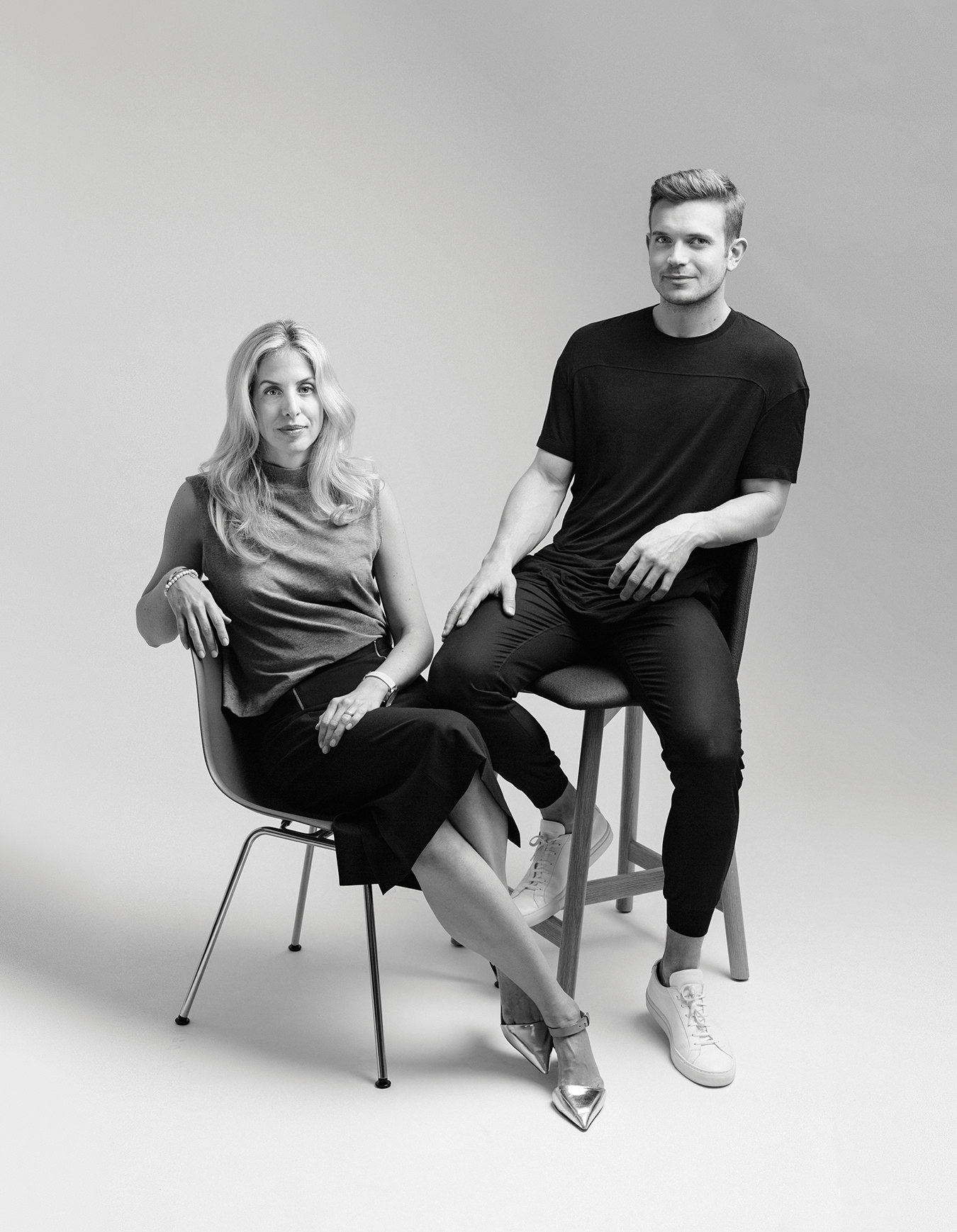
Kit and Ace co-founders Shannon and JJ Wilson.
If that seems like a confusing niche, Kit and Ace’s customers would agree. “The need for us to more clearly define who we’re building for really came from the people that were buying our stuff,” says Shannon of the feedback the line has received. Marilyn McNeil-Morin, chair of fashion studies at George Brown College, puts a finer point on the T-shirts, crop tops, and sweat-wicking pants. “What Kit and Ace is addressing is comfortable, casual clothing,” she says. “There’s a quality of longevity to the simple functionality of the design that adds value to the product—these pieces will stand the test of time.”
Perhaps what Kit and Ace really does best is save the time and energy of those for whom fashion has come to seem fussy and fatiguing and complicated to buy. “I think when you can streamline a wardrobe, build it for comfort and movement, for play, for office, for evening, if you can do that with one clothing line, I think it saves everyone time and is a better investment than multiple brands and different hierarchies of your clothing,” says Shannon. “It’s a uniform of mindful efficiency,” adds JJ. To elaborate, he recalls an April Fool’s joke that H&M and Mark Zuckerberg collaborated on. “The whole thing was they were making a uniform of a start-up entrepreneur. And within the content H&M created around the April Fool’s joke, they talked to Mark about how he doesn’t want to waste a second of creative thought to put towards what he’s wearing every day, and that’s the reason why he’s made a uniform, the same way Steve Jobs had his black turtleneck and jeans. The concept behind that is really part of the reason why Kit and Ace even exists,” he says. Maybe Kit and Ace is where you shop when you’ve got better things to do.
Any way you frame it, Kit and Ace’s clothing is plain. That’s not to say it isn’t stylish, or good, or it doesn’t have a responsive audience, but simply that the attire is secondary to the identity it reinforces. No matter how pleasant Technical Cashmere feels against your skin, being part of an elite team—an undercover athlete, a member of the creative class, a leader of a fulfilling, full-contact life—feels better. The brilliance of Kit and Ace is not only that it conjured a community identity at warp speed, but that it pulled that identity out of a void—minimal colours, straightforward styles, and a selling point mired in fabric, clothing’s most rudimentary component. In an industry where key players strive to stand out, Kit and Ace champions the pleasure to be found in limited choice, and the comfort to be taken in uniformity.

